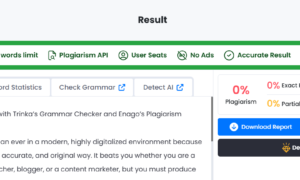Virtual Reality (VR) is revolutionizing the marketing landscape by offering immersive experiences that engage consumers like never before. This technology, which creates a simulated environment, is being utilized by forward-thinking companies to enhance brand storytelling, product visualization, and customer interaction. Understanding the basic principles of how VR works in marketing can help businesses leverage this technology to its fullest potential.
The Role of VR in Marketing
The core concept of VR marketing is to create a virtual environment that consumers can interact with, providing a unique and engaging experience. VR marketing goes beyond traditional advertising methods by immersing users in a branded experience that can evoke emotions and foster a deeper connection with the product or service. This immersive experience is made possible through the use of VR headsets and other devices that simulate a realistic environment.
Key Components of VR Marketing
- Immersion: VR creates a sense of presence, making users feel as though they are part of the virtual world. This immersion is crucial for engaging users and creating memorable experiences.
- Interactivity: VR allows users to interact with the virtual environment, enhancing engagement and making the experience more personal and impactful.
- Personalization: VR experiences can be tailored to individual users, providing customized content that meets their specific needs and preferences.
How VR Works in Marketing
To effectively use VR in marketing, it’s important to understand the technology’s basic principles and how they can be applied to create compelling experiences.
1. Creating Immersive Environments
The foundation of VR marketing is the creation of immersive environments that captivate the user. These environments can be anything from a virtual store where users can browse products to a simulated vacation destination that showcases a travel company’s offerings. 2.
Enhancing Product Visualization
One of the most powerful applications of VR in marketing is product visualization. VR allows users to see and interact with products in a virtual space, offering a more comprehensive understanding than traditional 2D images or videos.
- Storytelling and Brand Engagement
VR is an excellent tool for storytelling, enabling brands to craft narratives that users can explore. By immersing users in a story, brands can create emotional connections and leave a lasting impression.
- Creating Memorable Events
VR can also be used to create virtual events and experiences that users can attend from anywhere in the world. These events can range from product launches and fashion shows to virtual concerts and brand experiences. By offering exclusive and memorable events, brands can generate buzz and excitement.
5. Gathering Consumer Insights
VR marketing provides valuable data on user behavior and preferences. By tracking how users interact with the virtual environment, brands can gain insights into what captures their interest and how they make decisions.
Benefits of VR in Marketing
1. Increased Engagement
VR’s immersive nature captures users’ attention and keeps them engaged longer than traditional media. The ability to interact with the virtual environment makes the experience more memorable and impactful.
2. Enhanced Customer Experience
By providing a unique and interactive experience, VR enhances the overall customer journey. Users can explore products and services in a way that feels personal and tailored to their needs.
3. Improved Conversion Rates
The ability to visualize products and engage with them in a virtual space can lead to higher conversion rates. Users who have a better understanding of a product are more likely to make a purchase.
4. Differentiation from Competitors
Using VR in marketing sets brands apart from their competitors. It demonstrates innovation and a commitment to providing cutting-edge experiences for customers.
5. Valuable Data Collection
The insights gained from user interactions in VR environments can inform marketing strategies and help brands better understand their audience.
Implementing VR in Marketing Strategies
To successfully incorporate VR into marketing strategies, businesses should consider the following steps:
1. Define Goals and Objectives
Clearly outline what you want to achieve with your VR marketing campaign. Whether it’s increasing brand awareness, driving sales, or enhancing customer engagement, having defined goals will guide the development of your VR experience.
2. Choose the Right VR Platform
Select a VR platform that aligns with your goals and target audience. There are various VR devices available, from high-end headsets like the Oculus Rift and HTC Vive to more accessible options like Google Cardboard.
3. Develop Compelling Content
Create engaging and immersive content that resonates with your audience. This could involve 3D modeling, interactive elements, and rich storytelling to captivate users and deliver a memorable experience.
4. Test and Optimize
Before launching your VR campaign, conduct thorough testing to ensure a seamless experience. Gather feedback from test users and make necessary adjustments to optimize the content.
5. Promote Your VR Experience
Use various marketing channels to promote your VR experience. Social media, email campaigns, and partnerships with influencers can help generate interest and drive traffic to your VR content.
Conclusion
Virtual Reality is transforming the marketing landscape by providing immersive and interactive experiences that engage consumers in ways traditional media cannot. By understanding the basic principles of VR marketing and leveraging its benefits, businesses can create memorable experiences that drive brand engagement, enhance customer experiences, and ultimately, increase conversion rates. As VR technology continues to evolve, it will undoubtedly play an increasingly important role in the future of marketing.



































